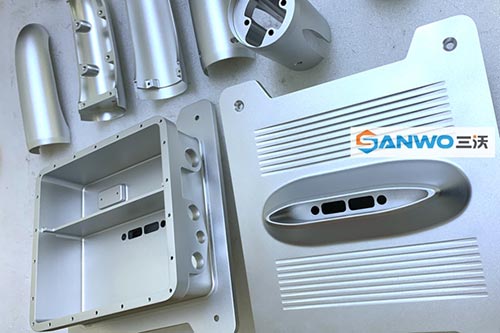How To Choose The Best Way To Make An Aluminum Prototype?
Views: 195 Update date: Oct 23,2024
Choosing the best method to make an aluminum prototype depends on several factors, including the complexity of the design, the budget, the required precision, and the intended use of the prototype. Here are some popular methods along with their considerations:1. CNC Machining:
- Pros: High precision, ability to create complex geometries, good surface finish.- Cons: Can be expensive for low-volume production, requires CAD designs.
- Best For: Detailed and durable prototypes, especially for functional testing.
2. 3D Printing (Additive Manufacturing):
- Pros: Rapid prototyping, cost-effective for small runs, flexible design changes.- Cons: May not provide the strength of machined parts, depending on the technology used (e.g., FDM vs. SLM).
- Best For: Quick iterations and visual prototypes, especially in early design phases.
3. Die Casting:
- Pros: Excellent for high-volume production, good surface finish, and dimensional accuracy.- Cons: High initial cost for creating molds, less cost-effective for low-volume runs.
- Best For: Final prototypes to simulate production parts.
4. Sheet Metal Fabrication:
- Pros: Good for creating lightweight and strong structures, relatively quick setup.- Cons: Less effective for complex shapes; may require additional welding or assembly.
- Best For: Prototypes that need to simulate end-use products made from sheet metal.
5. Investment Casting:
- Pros: Excellent detail and surface finish, suitable for complex shapes.- Cons: Higher costs due to pattern making, not as practical for very small runs.
- Best For: Functional prototypes requiring intricate designs.
Considerations:
- Budget: Determine how much you can spend and choose a method that fits your financial constraints.- Timeline: How quickly do you need the prototype? Some methods offer faster turnaround times than others.
- Functionality: Do you need the prototype to function under real-world conditions, or is it merely for visual representation?
- Design Complexity: Evaluate the intricacy of your design as some methods handle complexity better than others.
- Material Properties: Consider the mechanical properties of aluminum and whether they meet your requirements.
Conclusion
Evaluate your specific needs based on the criteria above to choose the most suitable method for creating your aluminum prototype. It might also be beneficial to consult with a prototyping service or manufacturer who can provide expertise tailored to your project.




